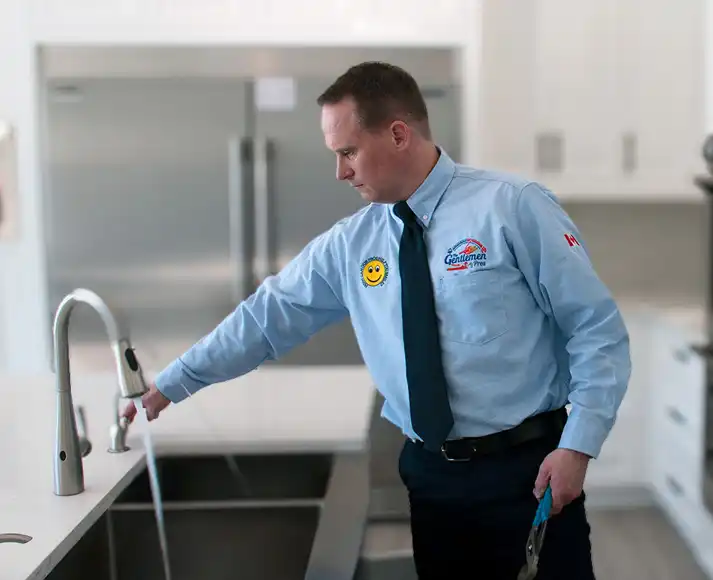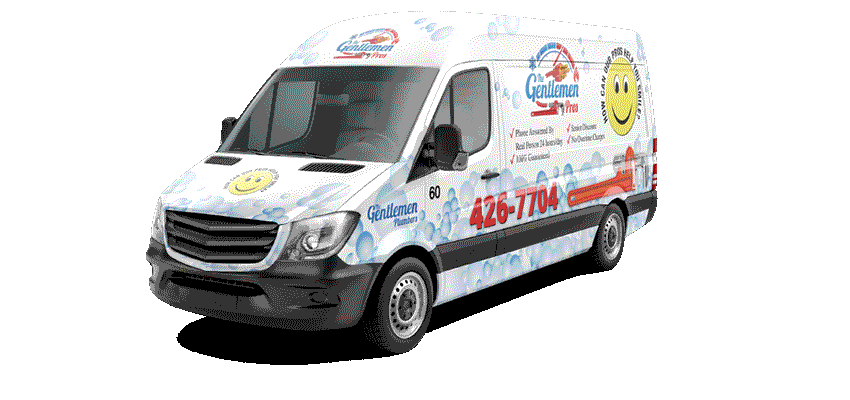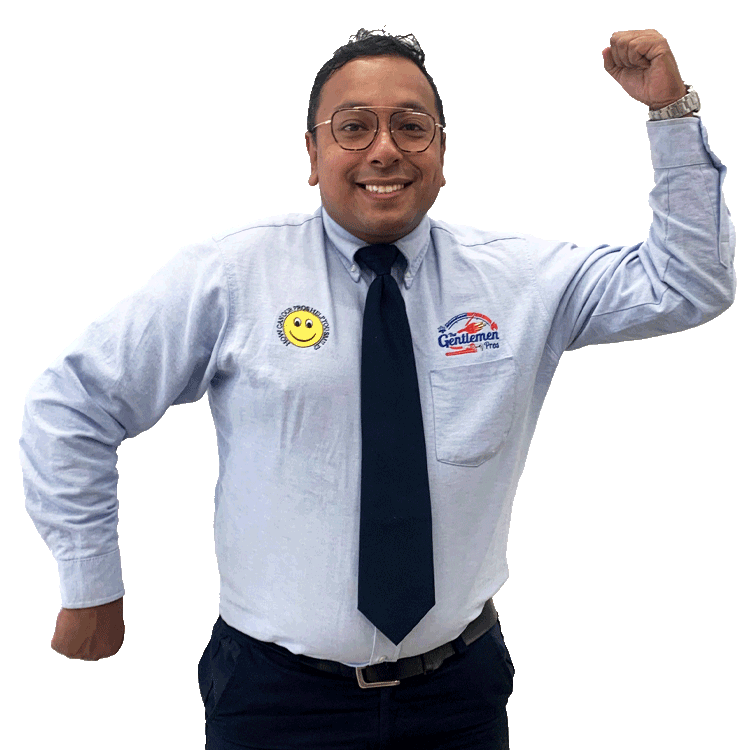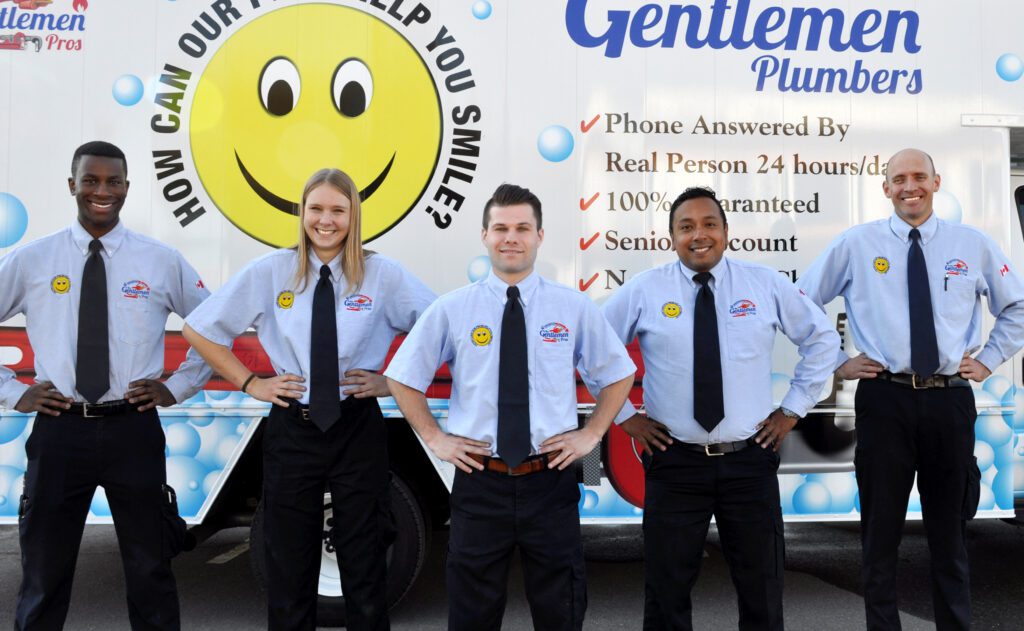We're In Your Neighborhood!

Same Day Service
Since 1992
Call The Gentleman Pros Now!
(780) 809-3219
We're In Your Neighborhood!


Same Day Service
Since 1992
Call The Gentleman Pros Now!
(780) 809-3219

Are you tired of spending money on bottled water? Fed up with the unpleasant taste and smell of your tap water? Look no further! The Gentlemen Pros offer a variety of home water filtration systems tailored to your needs. Our expert technicians will install the perfect system to improve your water quality, backed by an excellent warranty.
“Jordan was outstanding—knowledgeable, efficient, and extremely professional! He resolved all my issues thoroughly, providing clear and transparent information every step of the way. He also offered valuable advice on maintaining my home. Thank you to the Gentlemen Pros team for quickly sending such a skilled plumber!” Nitin K

The Gentlemen Pros carry and install a wide range of home water filtration systems.
Whatever your concerns with your water, we have a system that will help. And our expert technicians will install it for you. Give us a call!
One of our trained technicians will visit you, listen to your concerns about your water. If you are not on the municipal water supply, they will take a water sample and send it to the lab. (We do not take samples of municipal water because municipalities usually publish the results of their water testing). Based on your concerns and the water quality test results, we will recommend the best water filtration system for you and your family.
In addition to excellent water filtrations systems, we back up our quality products and installation with an excellent warranty.
This is a deep dive into the main causes of sewer backups.
So let’s dive right in!
There are three main ways to filter your water. And within these three categories there are a myriad of different options.
If your soap doesn’t suds and your water leaves a hard white film on your taps and in your sinks, you could have hard water and might want to look at a water softener.
Hard water is pretty common and caused by a substantial amount of the minerals calcium and magnesium in your water. In fact, Edmonton’s water is considered moderately hard.
What is considered a substantial amount? Well, you officially have hard water if you have over 120 mg/L of calcium carbonate in your water. The equation to determine if you have hard water is
2,497 (multiplied by the amount of calcium in your water) + 4.118 ( multiplied by the amount of magnesium in your water) = hardness
For example, if your water has concentrations of 10 mg/L of calcium and 10 mg/L of magnesium, the equation would look like this:
2.497(10) + 4.118(10)
24.97 + 41.18 = 66.15 mg/L
How does a water softener work?
Water softeners are not strictly a filtration system. They use a chemical process called ion exchange to remove the calcium and magnesium from the water, resulting in softer water.
The water entering your house first goes through your water softener to be treated before being dispersed throughout your home. Water softeners are considered a whole-house system.
Your water softener tank has a resin bed made up of tiny resin beads which are negatively charged. They are then coated in sodium ions which are positively charged. When your water moves throught the water softener’s tank, the magnesium and calcium ions — which are also positively charged — are attracted to the negatively charged resin beads. At the same time the positively charged sodium ions are attracted to the water molecule.
When this happens, the calcium and magnesium positive ions and the sodium positive ions switch places. The calcium and magnesium ions are now attached to the resin beads removing them from the water. The sodium ions are now attached to the water molecule. This exchange of ions allows the water molecule to keep a balanced charged.
Even though a little sodium is released into the water, the sodium doesn’t make the water taste salty and the treated water’s sodium levels are still well within safe levels.
Regularly (usually every few days), the water softener will rinse the resin beads in salt water. There is no more room on the beads for more calcium and magnesium ions and most of the sodium ions have been released. Meaning they are no longer softening the water and need to be recharged.
The salt water removes the calcium and magnesium ions from the resin beads and coats them with new sodium ions. The rinse water is then flushed from the system removing the calcium and magnesium with it.
The newly replenished beads can now continue softening your water.
Water softeners do not remove contaminants other than calcium and magnesium from your water. Depending on your water, you may want to use your water softener in conjunction with a water filter. A under the sink or faucet mounted filter is recommended for the places in your home were you require drinkable water.
Reverse osmosis systems are highly effective and can extract 90 to 99 percent of the organic and inorganic matter in your water. This matter is called total dissolved solids (TDS) and is measured as the amount of organic and inorganic material in a particular volume of water.
These systems use a series of filters. The number of filters your system has will be determined by the make and model. The main one being a membrane that filters out all molecules larger than a water molecule.
The feed water (untreated water) first passes through the pre filters (filters located before the membrane). These filters filter out larger particles and suspended matter in the water. Items like rust, algae, sediment, dirt, and chlorine.
This prefiltration captures the larger particles and helps the membrane focus on just the smaller particles. This helps the membrane last longer because it’s pores are not being clogged by the larger matter.
The water then passes through the semipermeable membrane. This is the key to the reverse osmosis system. The semipermeable membrane is filled with pores that are so small that they only let water molecules pass through.
The membrane traps the contaminants that made it through the pre filter stage. The resulting water is called the permeate.
Some systems contain post filters which gives the water a final polish before it reaches its destination. This is a final filter to remove any aeasthitic odor or taste from the water.
Some systems have a remineralization stage after the final filter. Reverse osmosis removes all the salts and minerals (e.g. calcium, magnesium, potassium). In this stage, the system replaces some of the salt and minerals which were removed. This can improve the taste and alkalinity of the water.
Carbon filters work by pulling the impurities in the water to its surface and storing them. This process is called adsorption which is different than absorption.
Carbon filters use activated carbon which is carbon that has been treated (usually with high heat) to increase its surface area and as a result increase its adsorption ability. The more surface area the carbon has, the more it can adsorb.
Activated carbon is a great material for adsorption. Its surface contains many cracks and pores to store the impurities from the water.



